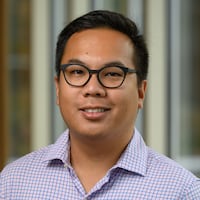Matt Schoen has spent years teaching Gwinnett County students who struggle to read, using activities and games he developed through trainings and programs.
In his classroom at Grayson Elementary School, he has little paper axes that students use to cleave up words into syllables. He also demonstrated phonics karate, in which students get into a martial arts stance and chop and trace the letters that correspond to the sounds in a word.
The approach behind Schoen’s lessons is on track to become the standard across Gwinnett, the state’s largest school district.
Gwinnett is implementing a new approach to literacy that leaders believe will shrink achievement gaps and create consistency in curriculum. District staff developed the program using resources that teachers have used successfully with dyslexic students and have been employed widely at other districts and some states.
Nearly 30% of all Gwinnett students have been reading below grade level since 2017, according to Georgia Milestones results. About 30% of Black students have been reading below grade level. Among Hispanic students and students receiving free meals, the amount has been closer to 40%.
On top of those learning gaps, “We know 100% of our students have been affected by the pandemic,” said Chris Brown, the principal at Grayson Elementary. “We have to make some changes. What we did before — balanced literacy — worked for the majority, but not all students. And each and every student needs some support.”
Gwinnett’s new program emphasizes the science of reading, which focuses on technical aspects, such as language structure and phonics. Proponents often compare it against balanced literacy, which they say de-emphasizes phonics and word recognition. One often criticized technique is cueing, which has the reader use context clues such as pictures on the page to help identify the word.
The debate over how to teach students to read is a decades-old issue. Fulton County last year adopted a wholesale change to a literacy program based on the approach — and invested $90 million in it.
More than half of elementary school principals in Gwinnett volunteered their school to participate in the first-year pilot of the literacy program. Additionally, every certified teacher in the district is required to take a 10-hour course that introduces the science of reading and delves into dyslexia and how to teach dyslexic students.
Anna Mary Smith, director of language arts and literacy for elementary schools, said the revamped program is the first full overhaul of Gwinnett’s literacy curriculum in more than 20 years and comes with an investment of $29 million of federal pandemic funds.
“Looking at our students’ historical performance and considering our vision for their future success, we see a massive gap,” Smith said at a school board meeting.
Credit: Josh Reyes
Credit: Josh Reyes
A group of parents of dyslexic students pushed the science of reading for months. They said the former curriculum failed students, leaving them unable to read until they found tutors or schools that used science-based techniques.
Studies have found that up to 20% of people have some level of dyslexia. Often, a student who struggles with reading would get pulled out of class for extra help or put in a special education program. Schoen thinks those students will be able to learn in their regular classroom and remain there with their peers without falling behind.
“We’re going to catch a lot of those kids who were struggling, but if we just did a few of these different techniques and strategies, would not have struggled and would not end up in special education,” Schoen said.
The rollout began with training over the summer, and additional training is scheduled for the school year. The plan includes universal screening for dyslexia. The state requires all districts to screen all incoming kindergartners for dyslexia by 2024.
The literacy plan received a positive response when it was introduced.
“These initiatives will change the trajectory of thousands of students’ lives and allow this county to ensure that every kid learns to read,” said Missy Purcell, an advocate for the science of reading and parent of a dyslexic student.
The district will continue developing the literacy plan and evaluating student progress throughout the school year.
Those evaluations will inform what lessons and materials will be used moving forward, Deputy Superintendent Nakia Towns said. The district will also decide in 2023 whether or not to expand the program to the entire district.
What is the science of reading?
The science of reading is a body of research that examines how children learn to read and write. It supports an approach to teaching that emphasizes decoding skills and word identification. Key elements include an understanding of phonics, syllables and syntax.
About the Author
Keep Reading
The Latest
Featured

